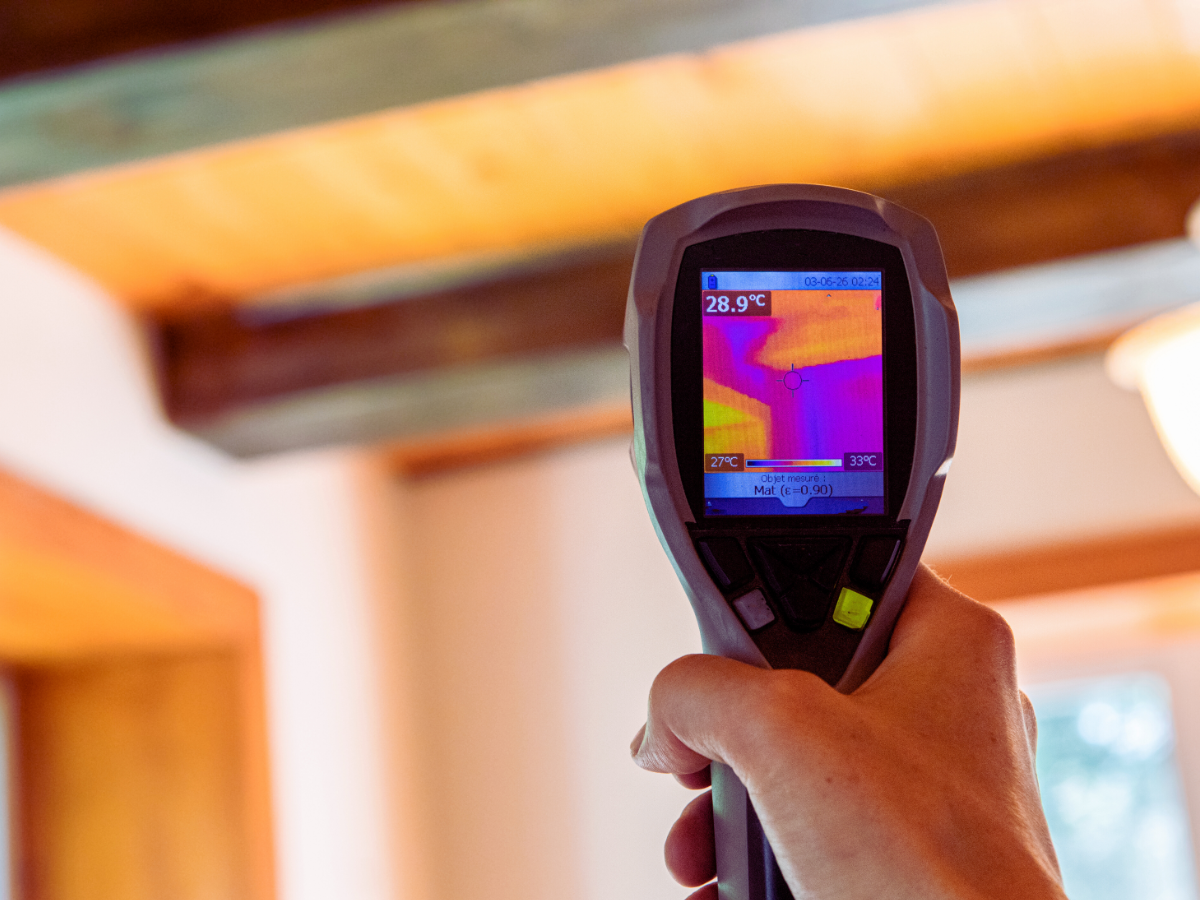 The majority of people spend 90% of their time indoors, according to the EPA. This is great for comfort and convenience, but only if the air quality is clean and safe. Many homes in Orlando, FL struggle with indoor air issues due to the high humidity and frequent AC use. Those near busy roads or construction zones usually experience the worst problems with dust and airborne pollutants.
The majority of people spend 90% of their time indoors, according to the EPA. This is great for comfort and convenience, but only if the air quality is clean and safe. Many homes in Orlando, FL struggle with indoor air issues due to the high humidity and frequent AC use. Those near busy roads or construction zones usually experience the worst problems with dust and airborne pollutants.
You may have heard that air fresheners and houseplants can clean and sanitize indoor air, but this isn’t exactly true. In fact, there are a lot of air quality myths floating around that are dangerous. You might think you’re improving your indoor air when you’re actually making it worse.
Understanding the truth is crucial for making sure your home remains healthy, safe, and breathable. In this guide, we’ll walk through 12 indoor air quality myths and what to do instead.
1. Myth: Indoor Air Is Cleaner Than Outdoor Air
When your home has poor ventilation or prolonged exposure to indoor chemical sources like cleaning products or synthetic air fresheners, its indoor air can be two to five times more polluted than the outdoor air. Letting us inspect and update the ventilation will help flush out harmful contaminants and bring in fresher, cleaner air.
2. Myth: Air Fresheners Make Indoor Air Cleaner
The majority of air fresheners release volatile organic compounds, including formaldehyde and benzene, as they evaporate into the air. These pollutants increase the risk of health problems, like respiratory irritation and headaches. Air purifiers and natural ventilation are better alternatives that don’t introduce harmful chemicals into your indoor environment.
3. Myth: Houseplants Are Enough to Purify the Air
A misinterpreted NASA study led many homeowners to believe they could achieve perfect indoor air with houseplants. Although these green additions do help purify the air by absorbing small amounts of carbon dioxide and some toxins, their effects are minimal. Plants plus mechanical filtration is the best approach to consistently reduce indoor pollutants and maintain healthy air quality.
4. Myth: You Only Need to Change HVAC Filters Once a Year
Changing the HVAC air filter once a year puts your HVAC in a constant state of strain. As dust and debris clog the filter, it will struggle due to restricted circulation. This increases energy costs and causes premature breakdowns and repairs. Instead of once a year, you should change the filter every 30 to 90 days. For ductless systems, filter changes are necessary every two weeks.
5. Myth: Humidifiers Always Improve Air Quality
Humidifiers work great for relieving dry skin and respiratory discomfort, but too much moisture in the air invites mold growth and dust mites. The ideal humidity for most homes is 30–50%.
6. Myth: CO₂ Levels Indoors Aren’t a Big Deal
Carbon monoxide in your home is very dangerous to your health. It causes fatigue, poor concentration and even death in high concentrations. Every home with fuel-burning appliances or fireplaces should have CO₂ detectors installed in key areas, especially near bedrooms and living spaces.
7. Myth: Ventilation Is As Simple as Opening a Window
When opening windows to create a natural breeze and improve ventilation, you must make sure the outdoor air is cleaner than the indoor air. You can do this by checking local air quality indexes and checking pollen or pollution levels. On days when air quality is poor or pollen counts are high, it’s best to use a mechanical ventilation system like a HEPA-filtered ERV (energy recovery ventilator).
8. Myth: Only People With Allergies Should Care About IAQ
Poor indoor air quality certainly worsens allergies and asthma symptoms, but it’s also bad for those without these illnesses. VOCs and elevated CO₂ levels in the air are common causes of fatigue, headaches, poor cognitive function, and other problems that reduce productivity. Long-term exposure to poor air quality can even cause cardiovascular and respiratory diseases. Because indoor pollutants affect both short- and long-term health, everyone should care about their home’s air quality.
9. Myth: Dust Is Just a Cosmetic Issue
Dust does much more than make surfaces look dirty. It can harbor allergens, chemicals and heavy metals like lead and mercury that impact long-term health. Wiping down all surfaces with a damp cloth once a week is a great way to prevent the dust from becoming airborne.
10. Myth: Air Quality Monitors Are Unnecessary
Don’t believe the myth that air quality monitors are unnecessary. Lots of pollutants like VOCs and CO₂ are odorless and invisible. An air quality monitor will give you access to real-time data about your home’s air quality needs.
11. Myth: Good Smell = Good Air Quality
Just because your air smells clean doesn’t mean it is. Air fresheners simply mask odors and release more pollutants. Plus, CO₂ and lots of VOCs have no smell. This is another reason that you should invest in an air quality monitor.
12. Myth: Professional IAQ Testing Is a Waste of Money
Poor indoor air quality affects your health and home in lots of ways that can cost you money. You might get a doctor bill from having to treat chronic allergies or respiratory irritation. Excess dust and debris can strain your HVAC and lead to expensive repairs. Professional IAQ testing may require an initial investment, but it helps save money by pinpointing problems with radon, mold and high particulate matter.
5 Proven Tips to Improve Indoor Air Quality
 Want better air at home? Start with these five steps:
Want better air at home? Start with these five steps:
- Regular filter changes: Prevents buildup and keeps air flowing efficiently.
- Invest in HEPA air purifiers: Captures allergens and particles other filters might miss.
- Maintain optimal humidity: Reduces indoor mold growth and dust mite survival.
- Use low-VOC products: Minimizes chemical exposure from everyday household items.
- Get professional IAQ assessments yearly: Detects hidden pollutants before health problems begin.
FAQs About Indoor Air Quality
What are the biggest causes of indoor air pollution?
Poor ventilation, off-gassing from materials, mold, and daily activities, like cooking and cleaning, are the biggest causes of indoor air pollution. Using HEPA filters and natural ventilation are excellent ways to remove airborne pollutants and improve overall air quality.
How can I tell if my indoor air is unhealthy?
Allergies, musty smells, headaches, fatigue, and visible dust buildup are major warning signs of air quality problems. HVAC problems like poor airflow and frequent filter clogs also indicate contaminant buildup in your system. You can use IAQ testing to identify hidden pollutants and choose targeted solutions to improve indoor air.
Are air purifiers really worth it?
Yes, air purifiers are worth the investment, especially models with HEPA filters — they capture allergens, dust, and some VOCs. Many versions even come with smart sensors and auto modes to make it easier to maintain optimal air quality without constant monitoring.
Breathe Easier with One Hour Orlando
 It’s time to stop falling for indoor air quality myths. Here at One Hour Air Conditioning & Heating, we’re here to answer any questions you have about IAQ testing, ventilation and purification options. Our goal is to help you create living spaces where the air stays fresh and you love spending time. Better air = better life.
It’s time to stop falling for indoor air quality myths. Here at One Hour Air Conditioning & Heating, we’re here to answer any questions you have about IAQ testing, ventilation and purification options. Our goal is to help you create living spaces where the air stays fresh and you love spending time. Better air = better life.
Get your indoor air professionally tested today and breathe easy tomorrow with One Hour. We offer many types of indoor air quality services in Orlando, FL and the surrounding areas. We’re always on time or you don’t pay a dime!